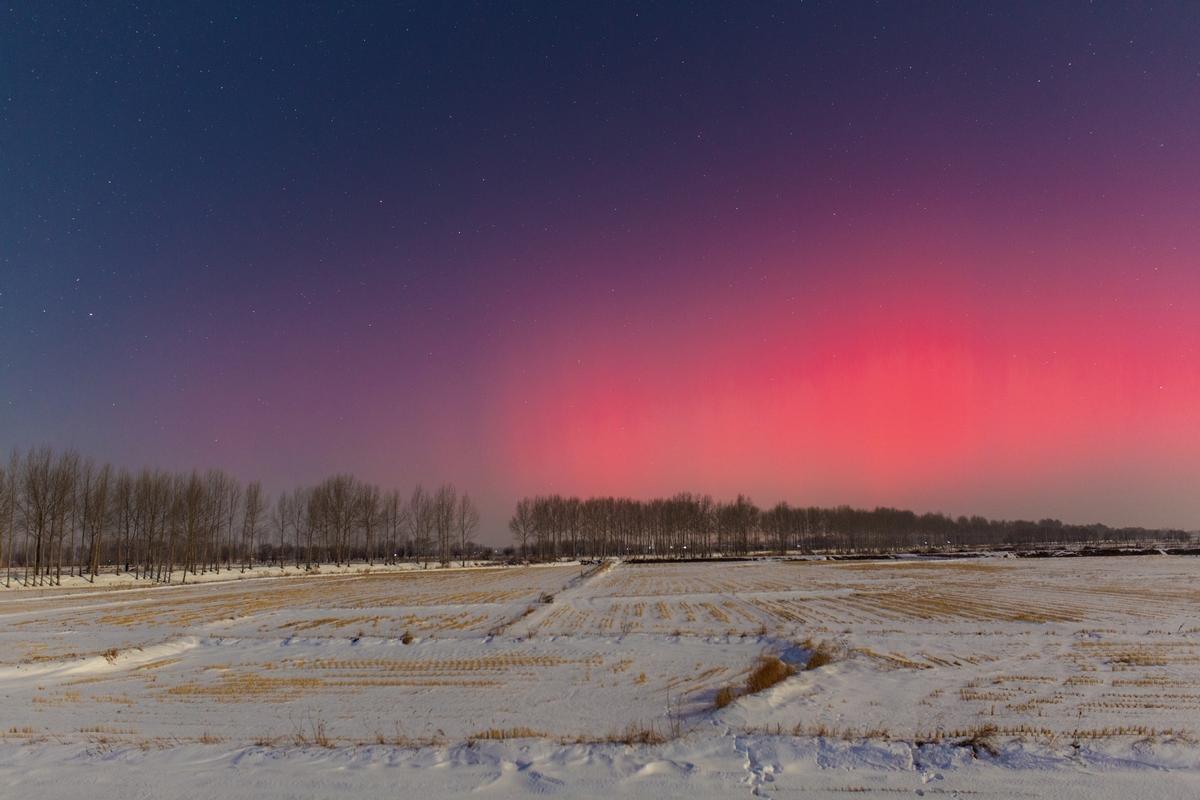
 0 Comment(s)
0 Comment(s) Print
Print E-mail China Daily, December 4, 2023
E-mail China Daily, December 4, 2023
Northern Lights illuminate the sky in Jiamusi, Northeast China's Heilongjiang province, Dec 1, 2023. [Photo/Xinhua]
Over the weekend, the northern regions of China experienced a spectacular display of auroras, with even some individuals in Beijing witnessing the rare and vivid occurrence of red auroras.
An aurora is a natural electrical phenomenon that appears to light the sky, the most famous being the aurora borealis, or Northern Lights, that appear in high-latitude regions of the northern hemisphere.
On Friday, several photos of the auroras were posted on social media. These widely circulated images showed red and green auroras above Mohe in Heilongjiang province, located in the northernmost tip of China.
Auroras were observed in various regions of northern China, including Heilongjiang, as well as the Inner Mongolia and the Xinjiang Uygur autonomous regions, according to a Saturday news release by the National Center for Space Weather.
Even in Beijing, a city that rarely sees auroras, clear aurora observations were recorded, it added.
The center noted that the aurora activity was related to recent geomagnetic storms on Earth, saying that due to a solar coronal mass ejection, varying intensities of geomagnetic storms occurred from Friday night to Saturday morning.
Along with possibly disrupting electricity and telecommunications networks, coronal mass ejections can produce auroras outside of their expected latitudes.
Han Dayang, an engineer from the NCSW, said on Sunday that the fundamental cause of geomagnetic storms is solar eruptive activity, specifically coronal mass ejections from the sun.
He said on microblogging platform Sina Weibo that under the drive of extremely powerful magnetic-field energy in the active regions of sunspots, the solar surface material is ejected at speeds ranging from hundreds to thousands of kilometers per second, forming a hemispherical shock wave.
If the shock wave happens to impact the Earth directly, the high-energy charged particles from the sun will cause drastic changes in the direction and magnitude of the Earth's magnetic field, leading to a geomagnetic storm, he said.
Auroras occur as a result of the interaction between these solar particles and the Earth's magnetic field.
Typically, auroras are more commonly seen in regions closer to the Earth's magnetic poles, such as the Arctic and Antarctic. In northern China, particularly in Beijing, auroras are relatively rare. But if the geomagnetic storm is exceptionally strong, the range of aurora occurrence can expand, Zhu Jin, a researcher at the Beijing Planetarium, was quoted by Redstar News as saying.
The NCSW said on Saturday that, based on the latest monitoring, there is still a possibility of small to moderate geomagnetic storms on Monday. That notice has led plenty of internet users to express their anticipation of witnessing the beauty of the aurora.
Go to Forum >>0 Comment(s)